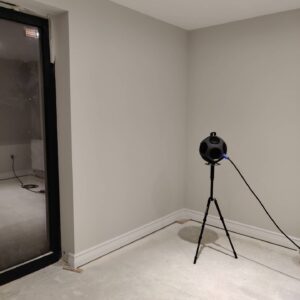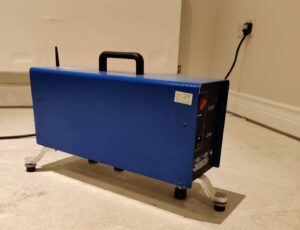Sound Insulation Testing for New-Build and Conversion Residential Construction: What You Need to Know
When it comes to new-build and conversion residential construction, ensuring the acoustic comfort of future occupants is crucial. In the UK, Part E of the Building Regulations sets out the requirements for sound insulation testing, and compliance is non-negotiable. In this blog post, we’ll dive into the key aspects of Part E sound insulation testing, its significance, and how it applies to both new builds and conversions.

Understanding Part E Sound Insulation Testing
Part E of the Building Regulations, also known as “Resistance to the Passage of Sound,” addresses the acoustic performance of buildings. It is specifically concerned with two critical aspects: airborne sound (such as voices and music) and impact sound (footsteps and moving furniture).
Sound insulation testing, as mandated by Part E, is designed to measure the sound transmission characteristics of walls and floors, ensuring they meet the required standards. The objective is to prevent sound from one dwelling disturbing the peace and quiet of adjacent properties.
When Is Sound Insulation Testing Required?
Sound insulation testing is mandatory for all new residential buildings, be it detached houses, apartments, or conversions of non-residential spaces into residential ones. The specific trigger points are as follows:
- New Builds: For new dwellings, Part E requires that sound insulation tests be conducted on a sample of units. The number of tests depends on the size and layout of the development but typically includes a selection of party walls and floors.
- Conversions: When non-residential properties, like offices or warehouses, are converted into residential units, sound insulation testing is required to ensure the new spaces meet the necessary acoustic standards. This is crucial to guarantee the comfort and well-being of future residents.
The Testing Process
Sound insulation testing involves measuring the sound insulation properties of separating walls and floors between dwellings. The tests are conducted by specialists using specialized equipment.
- Airborne Sound: To assess the airborne sound insulation, a loudspeaker is used to generate a standardized noise source in one room. Sound levels are then measured in both the source room and the adjacent dwelling. This evaluates how much sound is transmitted through the separating partition.
- Impact Sound: Impact sound testing involves dropping a series of weights onto the floor in the source room. Again, sound levels are measured in both rooms to evaluate the impact sound insulation performance.
Interpreting the Results
The results of sound insulation testing are typically presented in decibels (dB). The higher the dB value, the better the sound insulation. To comply with Part E, test results must meet or exceed the minimum standards specified in the regulations.
If a building fails the sound insulation test, remedial measures must be taken to improve its acoustic performance. This could involve adjustments to the construction, such as adding additional insulation or using different materials.
Why Sound Insulation Testing Matters
The importance of sound insulation testing cannot be overstated. Adequate soundproofing between residential units is essential for the quality of life of occupants. It ensures privacy, reduces disturbances, and contributes to overall well-being.
For developers and property owners, compliance with Part E is a legal requirement. Failing to meet the acoustic standards not only results in costly remedial work but can also lead to disputes with residents and potential legal issues.
In Conclusion
Sound insulation testing is a critical part of both new-build and conversion residential construction. Part E of the Building Regulations sets out the requirements to ensure that future residents can enjoy a peaceful living environment. Compliance is not only a legal obligation but also a fundamental aspect of creating comfortable and harmonious homes.



